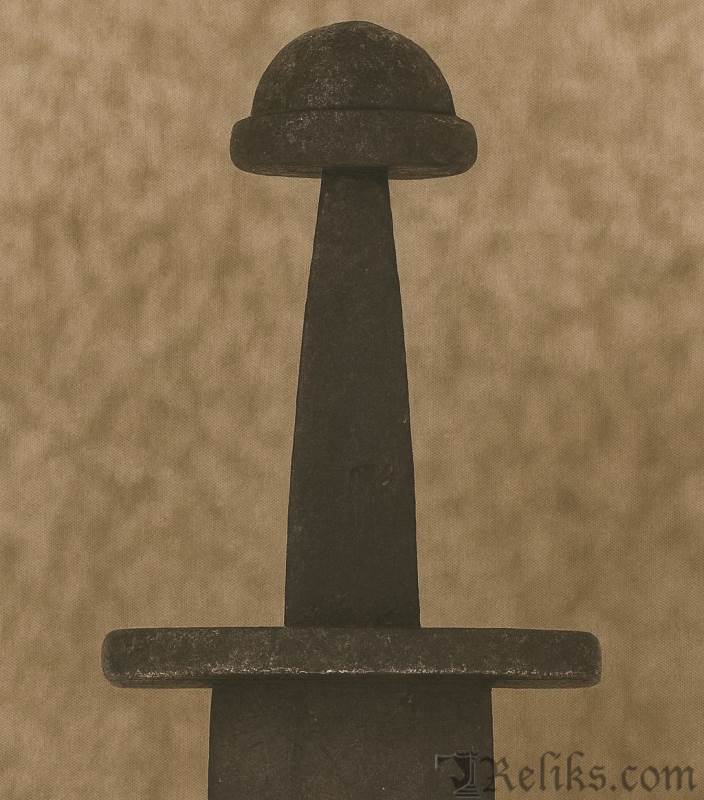Viking Sword Type N (Late 9th Century)
Defining Features
Type N is one of the rarer classifications in Petersen’s Viking sword typology, with only seven recorded examples. Despite their scarcity, these swords stand out by their distinct pommel form and overall simplicity. The pommel is rounded, set on a straight upper guard, lacking the lobed or triangular shaping of many other types. This design gives Type N swords a restrained, almost austere character.
The upper guards average between 7 and 8 cm in length, though one unusually large example extends to 15.4 cm. Pommel height ranges from 2.4 to 3 cm, while the guards typically stand about 1 cm high. The cross-section varies slightly: some taper to pointed ends, others echo the blockier silhouette of the utilitarian Type M. None of the surviving examples carry the silver or bronze inlay seen on more prestigious types.
Distribution and Finds

Viking Sword Type N — Rare Round Pommel Swords of the Late 9th C
The Type N group is geographically scattered but shows a concentration in Norway. Examples are recorded from Nordby in Akershus, Kaupang in Vestfold, Kvinnherad, Ulvik, and Voss in western Norway, and further north in Gloppen and Romsdal. The small sample suggests the type was never widespread, but rather a localized or transitional form.
Dating and Weapon Associations
Type N is generally dated to the second half of the 9th century, though a few specimens may extend into the early 10th. Associated finds help anchor its chronology: spearheads of F-type, axes of D–E and G-types, and in one case a younger iron rangle with rattling rings. These combinations reflect the transition from 9th-century forms toward those of the 10th.
Interpretation

Petersen Sketch (fig.103)
The origins of Type N remain uncertain. Its rounded pommel may represent a simplified evolution of the older three-part pommels, or perhaps an independent form influenced by external styles. Its lack of ornamentation strongly contrasts with the richly decorated hilts that were increasingly common in the period. Rather than a showpiece for high-status warriors, the Type N sword appears to have been a practical weapon: straightforward, functional, and reliable in combat.
In this way, Type N illustrates the diversity of Viking arms. For every lavishly inlaid Ulfberht, there were simpler blades designed for warriors more concerned with battlefield performance than with prestige or display.
Core classification based on Jan Petersen, De Norske Vikingesverd (1919). Additional commentary by Reliks.com.